
Concept Kids Animals is a cooperative version of the game Concept, adapted to children aged 4 and up. Use the icons on the board to get other family members to guess as many animals as possible and win together! The following rules are adapted for younger kids, aged 4 and up.
Components
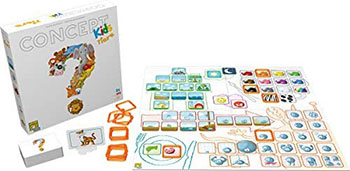
- 1 game board
- 110 cards
- 16 rings
- 1 card holder
- 1 quick rules
- rulebook
Object of the Game
In Concept Kids, everyone plays together.
The object of the game is to find 12 animals by using only the various icons on the game board. After 12 animals, tally up the final score and try to do better each game!
Setup
Place the game board in the middle of the table so that all players can see it clearly.
For your first few games, we suggest you only use blue framed cards. Return the red framed cards to the box, they won't be used for this game.
Shuffle all of the blue framed cards and randomly take 12 to form a face- down deck, next to the game board. Return the remaining cards to the box, they won't be used this game.
Place the card holder in front of you.
Place all of the rings near the board.
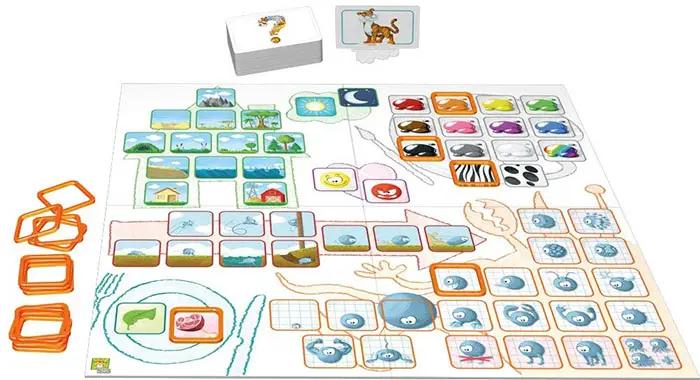
Game Play
Guess an Animal
Note: In this rulebook, "You"always refers to an adult.
During the game, all children are making YOU guess an animal by describing it only using the icons on the board.
Take the top card of the deck, without looking at it, and place it in the card holder so that all kids can see it.
Then, taking turns, the children each place a ring on an icon on the game board to try to help you guess that animal. They can, of course, help each other choose the icons that best characterize the animal.
You can make as many guesses as you want. However, the children can only answer with yes or no to these guesses.
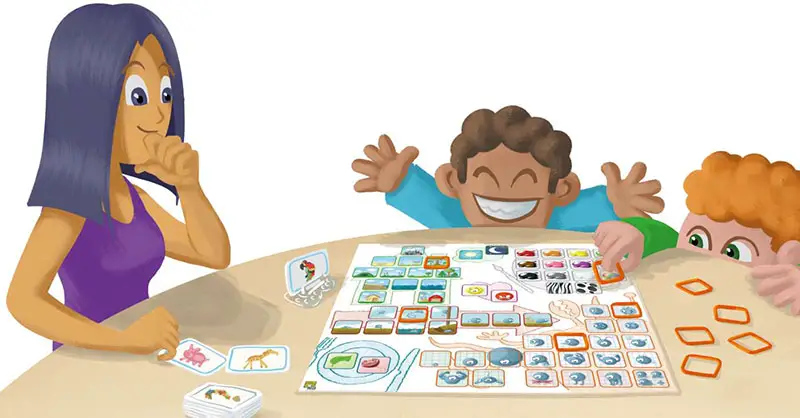
Result

If you correctly guess the animal, place the card face up next to the deck.
This card will be worth 1 point at the end of the game.

If you can't guess and you give up, the children reveal the animal to you. Then place that card in the box - it won't be counted for the final score.
Note: You must give up if the children can't place anymore rings and you can't identify the animal.
Then, draw a card and try to guess a new animal.
End of the Game
When the deck of 12 cards is empty, the game ends.
Count the number of found cards to determine your score.
Compare that score with the scale given below to know how well you rate.
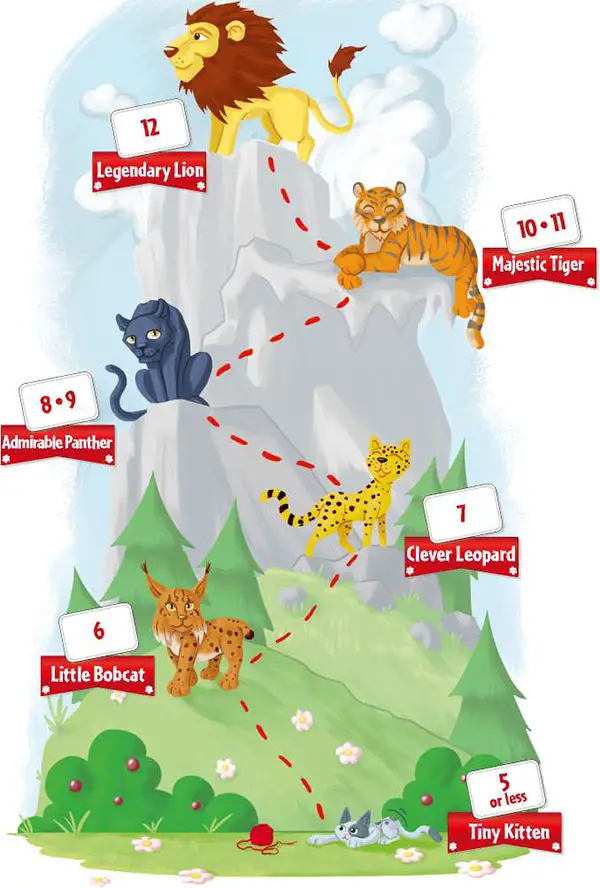
Managing the Difficulty
You'll find below three variants to adapt the game for your children. These variants can also be combined with each other. For each of these, the game plays out according to the standard rules previously stated, with the exception of the following points:
-
Role Reversal
The children can take your role. To do this, place the card holder in front of a child who puts a card in it without looking at it. You and the other children must now get that child to guess the animal.
-
Level of the Cards
The cards offer two difficulty levels:
The blue framed cards depict animals that children generally learn about in school, in nursery rhymes, or in books.
The red framed cards depict less common animals that require a greater knowledge of the animal kingdom.
To add difficulty, you can play with blue framed and red framed cards together, or with only the red framed cards.
-
For Ages 6 and Up
When you play with a group of older children, it's no longer the group that makes a player guess, but a SINGLE player who tries to get all of the other players to guess an animal.
For setup, take 24 cards instead of 12.
At the beginning of each turn, a player takes two cards from the deck. They choose one and return the other card to the box.
Then that player makes all other players guess the animal they've chosen by using only the icons on the game board.
As soon as any player finds the animal or the group gives up, the turn ends. It's then the next player's turn to make the other players guess an animal.
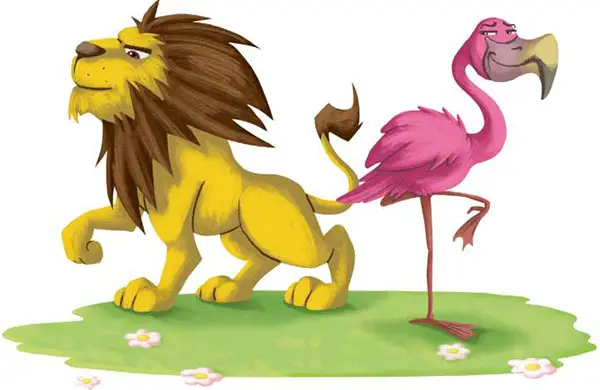
Continue Reading

